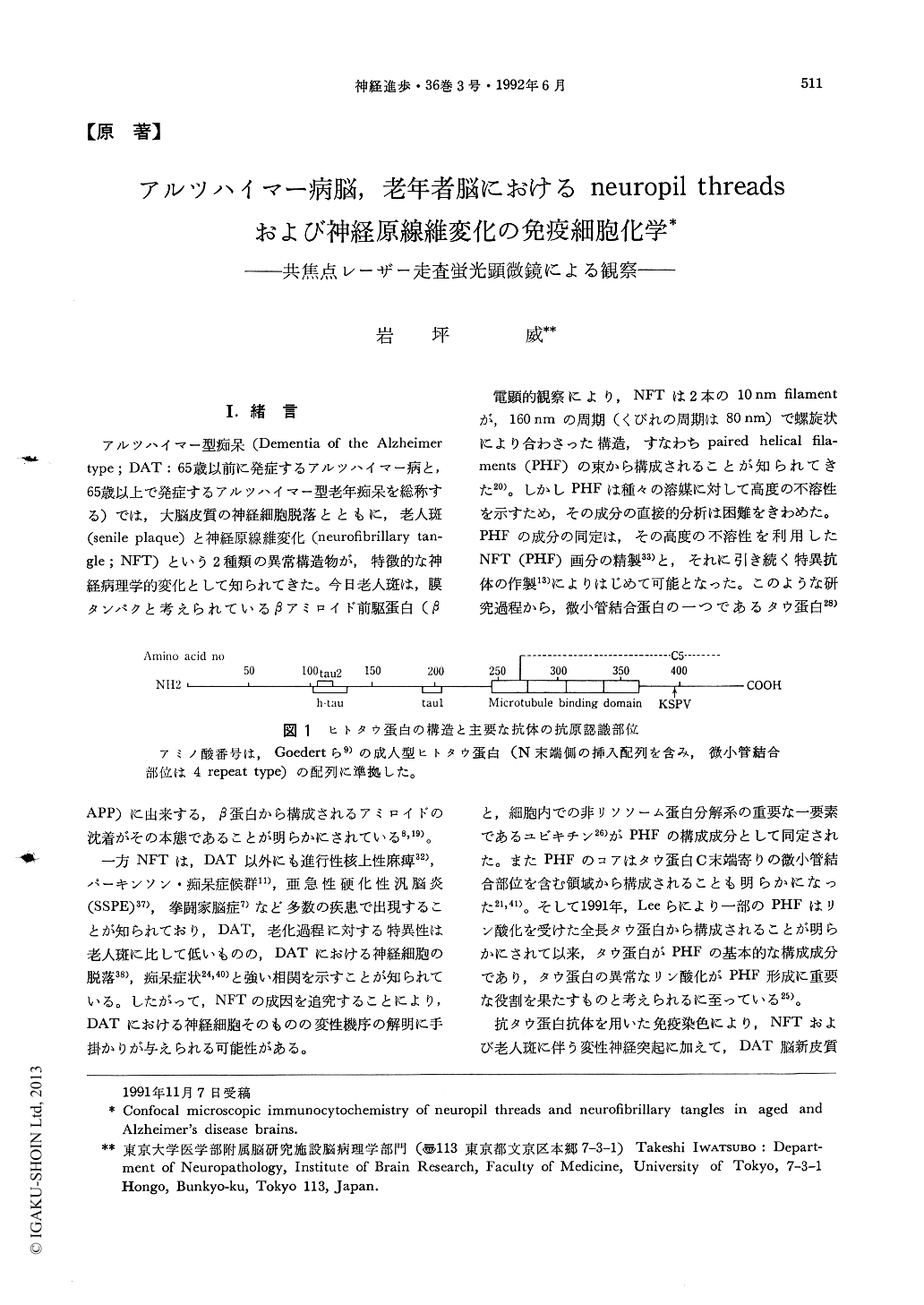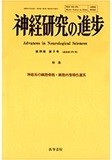Japanese
English
- 有料閲覧
- Abstract 文献概要
- 1ページ目 Look Inside
I.緒言
アルツハイマー型痴呆(Dementia of the Alzheimertype;DAT:65歳以前に発症するアルツハイマー病と,65歳以上で発症するアルツハイマー型老年痴呆を総称する)では,大脳皮質の神経細胞脱落とともに,老人斑(senile plaque)と神経原線維変化(neurofibrillary tangle;NFT)という2種類の異常構造物が,特徴的な神経病理学的変化として知られてきた。今日老人斑は,膜タンパクと考えられているβアミロイド前駆蛋白(βAPP)に由来する,β蛋白から構成されるアミロイドの沈着がその本態であることが明らかにされている8,19)。
一方NFTは,DAT以外にも進行性核上性麻痺32),パーキンソン・痴呆症候群11),亜急性硬化性汎脳炎(SSPE)37),拳闘家脳症7)など多数の疾患で出現することが知られており,DAT,老化過程に対する特異性は老人斑に比して低いものの,DATにおける神経細胞の脱落38),痴呆症状24,40)と強い相関を示すことが知られている。したがって,NFTの成因を追究することにより,DATにおける神経細胞そのものの変性機序の解明に手掛かりが与えられる可能性がある。
I studied immunocytochemically the neuropil threads and neurofibrillary tangles in aged and Alzheimer's disease brains using a confocal laser scanning fluorescence microscope. Some of the neuropil threads visualized by tau antibodies were shown to occur in small dendrites, although the majority of the threads were not continuous with dendritic branches. This may suggest that normal neuronal cytoskeletons are liable to disappear in thread-bearing neurites. Double-labelling with tau/ ubiquitin antibodies revealed that ubiquitin-immunoreactivities were lacking at one, or more often, both ends of the tau-positive threads.

Copyright © 1992, Igaku-Shoin Ltd. All rights reserved.


